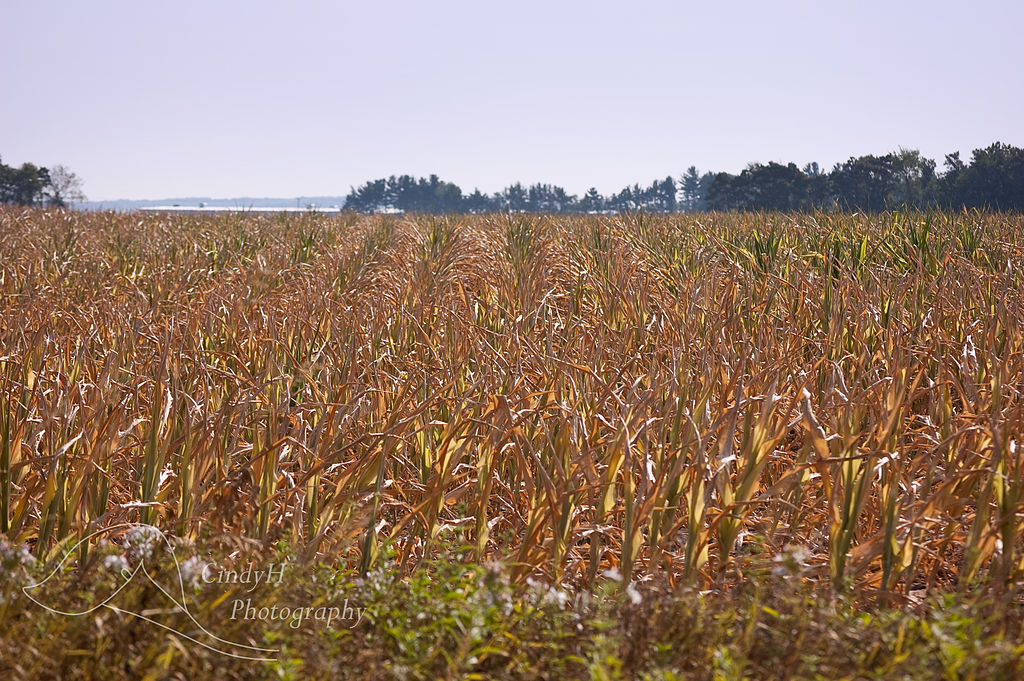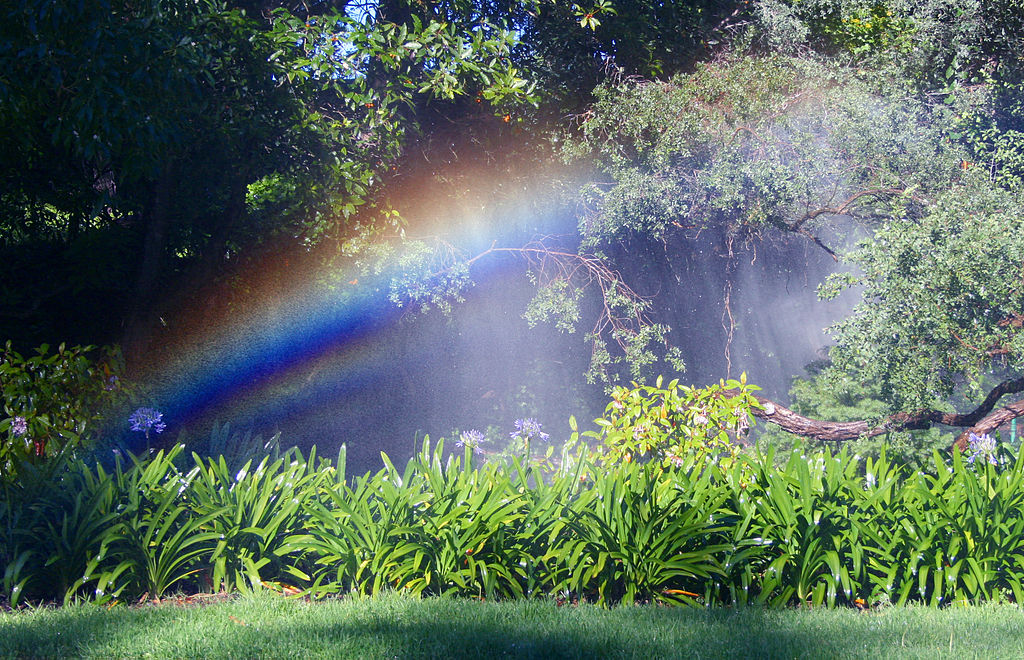Linda’s post last week about “drought-resistant” plants made me think about drought and how different types of drought affect gardeners in different ways. In her article, she defined drought as “an unusual lack of rainfall”. This is one of four different kinds of drought that climatologists talk about, and I thought it might be interesting for you to hear about how the four (or maybe five) types of drought differ and how they affect gardeners in diverse ways. A great source of drought information across the U.S. is https://www.drought.gov/.

Meteorological drought
The first type of drought, the one Linda described last week, is what climatologists consider a meteorological drought. A meteorological drought is related to how much rain you get compared to usual conditions at your location. I like to think of it as “too many days of nice weather in a row”, since in these dry conditions, the sun is shining and it is a great time to garden, play golf, or do construction. Of course, if you don’t get rain for a long time, you start to see impacts on plants, water bodies, and wells, but meteorological drought is usually not identified in terms of impacts, just on the amount of precipitation measured over weeks, months or years. Meteorological droughts look different depending on where you are. It is possible to have drought even in a desert if rain does not fall over an unusually long time. Droughts in the Pacific Northwest might look quite different since the frequency and amount of rain looks a lot different there. In the Southeast, drought can be hard to identify by looks since even when rain does not fall for a long time, things tend to stay relatively green because in our worst droughts we still get 35 inches of rain a year. Most gardeners can cope with meteorological drought by watering their plants at appropriate intervals and reducing impacts of the dry conditions by mulching to help keep moisture in the soil.

Agricultural drought
I spend a lot of time talking about agricultural drought to the farmers and extension agents I work with, because agricultural drought is always on their mind. Agricultural drought is defined by a negative water balance that can be related to both lack of rainfall and/or high temperatures that increase evaporative water stress on growing plants. It occurs mainly in the growing season because that is when the crops are actively growing and impacts are most noticeable. A 3-week dry spell may not be a problem for most gardeners that water their plots, but if you are a dryland farmer without irrigation, you can lose an entire crop of corn for the year if the dry spell occurs when the corn is pollinating and the silk dries out before the pollen can stick to it. Often agricultural drought can occur even when there are no other impacts to us because it is subtle; most people don’t see the impacts until months later during harvest. If you have limited access to water for irrigation or very sandy soil in your garden, then you are more likely to be affected by agricultural drought since it will be harder to maintain plant health when the soil is dry.
Agricultural droughts are often related to flash droughts. Flash droughts are characterized by very rapid development or intensification over a short time period, and crops are often the first things affected because of their need for frequent watering. Flash droughts are often characterized by a lengthy dry spell coupled with very high temperatures, something that is common when you have a persistent area of high pressure right over your location.

Hydrological drought
Where agricultural drought is related to a shortage of water over time periods as short as a week to a month, hydrological drought is related to a shortage of water over months or years. Climatologists measure hydrological drought as precipitation deficits over periods that range from three months to multiple years. You can see hydrological drought in dropping stream, lake, and reservoir levels and in dropping groundwater levels if the deficit lasts long enough. A hydrological drought can occur even if no agricultural drought is observed when you get rain at frequent intervals but it is less than normal over a long time period, as long as the rainfall is enough to sustain the crops (or if it is winter, when there are not many crops growing).
Hydrological drought tends to affect gardeners’ access to water for irrigation because the long-term water deficits lead communities to enact water conservation measures to protect drinking water supplies. Most local and state governments have tiered conservation measures that get more strict as the water supplies get lower and lower. They may start by merely providing educational materials on water conservation and then progress to even-odd watering by dates or watering during overnight hours only (since there is less loss of water due to evaporation in cooler night-time temperatures). In the worst droughts, they may cut off the use of water for establishing new lawns and gardens (often with an exception for gardens that are used for food production). If a drought lasts for many years or even decades, then it is considered a megadrought, such as the one that is occurring now in the Southwest U.S. Megadroughts are related to long-period shifts in global atmospheric patterns and can lead to the abandonment of cities because of the loss of water to keep their citizens alive over time.

Socio-economic drought
Socio-economic drought is a little different than the other kinds of drought mentioned above. It is drought caused by a lack of water due to overuse, hoarding, or war. An example of a socio-economic drought might be one caused by one country damming a major river in their country to create a reservoir, keeping the river water from flowing downstream to other countries that depend on the water for agriculture or water supply. In the United States, disagreements between who is allowed to use available water often end up in court as cases like the Georgia-Florida “water war” that was recently adjudicated in the U.S. Supreme Court. Locally, disagreements about who is allowed to use the water sometimes result in tiered water pricing, where the more water you use, the higher the price. This affects gardeners who have plots that use a lot of irrigation because of the use of water features, plants with significant water needs, or lack of mulching or other methods of protecting soil moisture.
Recently, a fifth type of drought called ecological drought has been identified, since a lack of rainfall can affect natural ecosystems in ways that are distinct from gardens, farms, or watersheds. I won’t address it further here, but if you are interested in how natural ecosystems are affected by dry conditions, you will no doubt read about ecological drought in publications in the future.
Drought is a naturally occurring part of the climate across the world, and gardeners must understand the nature of drought in their area to recognize how it affects the weather and climate where they live. Linda’s article last week gives some good guidelines for how to make your garden work in your climate.
Such an fascinating follow-up on Linda’s helpful article! I was reminded of my Uncle Charles always complaining about “the drought” every summer on my grandpa’s farm in Festus, MO which is only about 35 miles from St. Louis where we lived. We would scoff at him since we’d have frequent summer downpours. I suppose being closer to the river makes a difference but could there also be some difference in weather patterns over cities?
Hi Kathie! There is no doubt that cities affect weather patterns. Most people know about urban heat islands caused by large masses of pavement in bigger cities, but even smaller cities like my home of Athens GA (population about 140,000) can have 10 degree F differences between the center of town and the outskirts in some weather conditions. Cities are also known to produce their own rain in some situations, and you can sometimes see showers and thunderstorms develop downwind of cities. They are caused both by the heat and the additional particles put out by emissions in the cities, which serve as a place for water droplets to form. St. Louis was one of the original cities studied for this effect, so I am not surprised your uncle noticed it there.
Fascinating is the right word for this! In retrospect, of course there are many different types of droughts with different causes and effects. But I wouldn’t have put it together on my own!
At the end you mention that “drought is a naturally occurring part of the climate across the world.” I feel like the vocabulary we use everyday doesn’t match with this reality. Can you speak more to this?
We should not expect the weather or climate to be the same all the time. In fact, most of us prefer it to change and not stay the same every day. There are many different cycles in the atmosphere that occur naturally. Many natural ecosystems are evolved to need periods of dry conditions to reproduce. So, although there are some areas where the climate is less variable than others, we should expect periods of drought along with wet periods and learn to adapt to both.